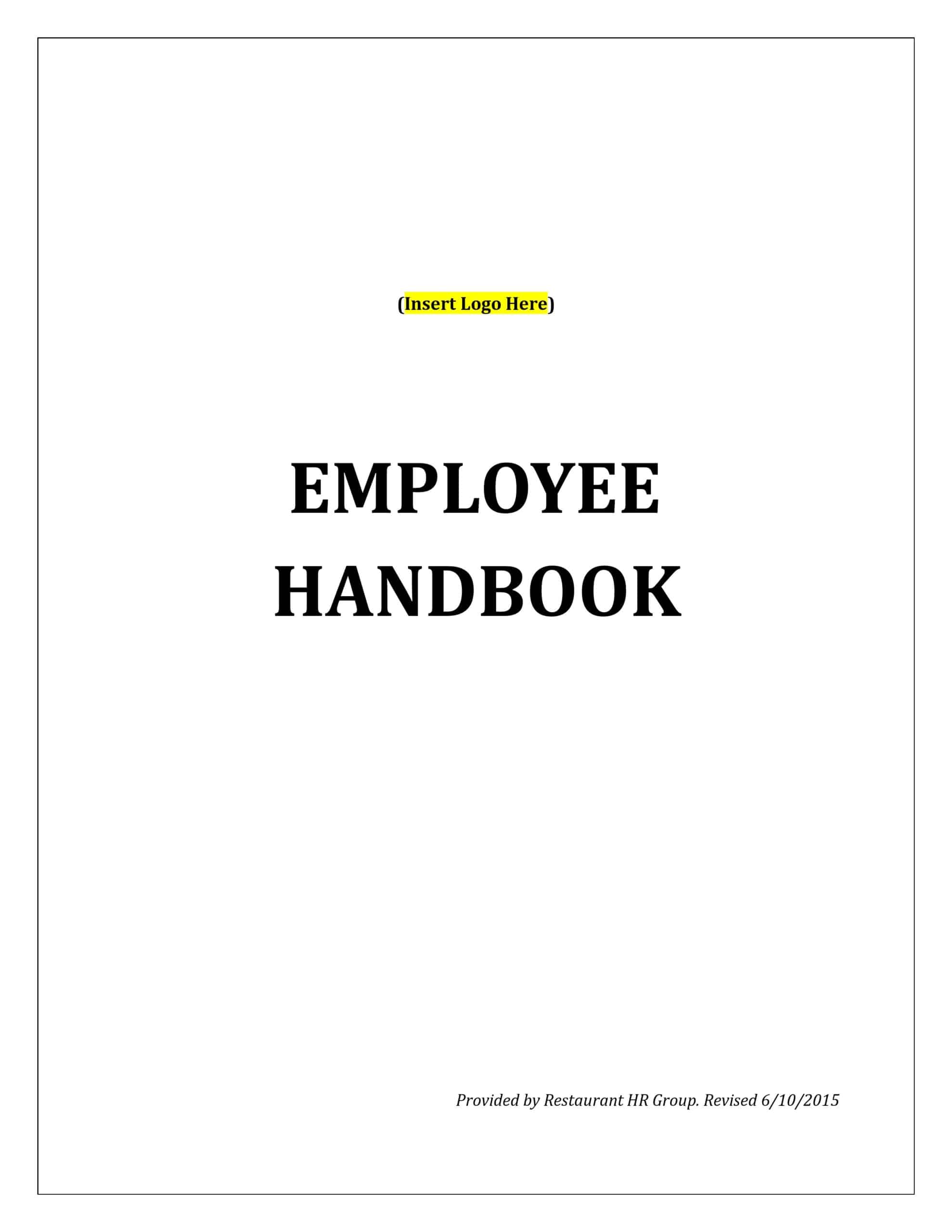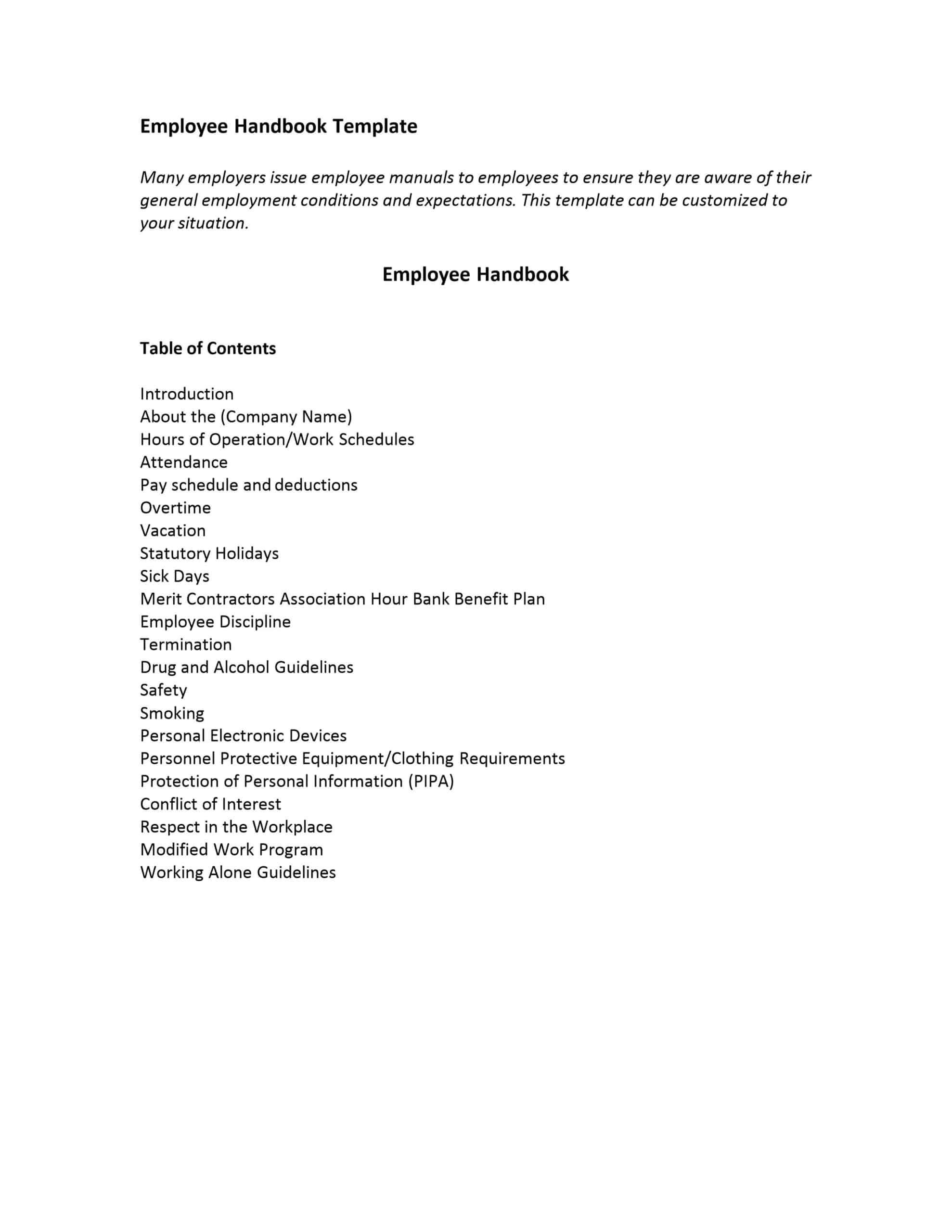An employee handbook is a document that outlines the policies and procedures of a company. It serves as a guide for employees, outlining their rights and responsibilities, as well as the company’s expectations of them. The handbook also provides information on benefits, time-off policies, and other important details related to working for the organization. This article will provide an overview of the key elements that should be included in an employee handbook, as well as tips for creating and distributing the document effectively.
Table of Contents
The Purpose of an Employee Handbook

The purpose of an employee handbook is to clearly communicate the company’s policies and expectations to employees. It serves as a reference guide for employees, providing them with important information about their rights and responsibilities, as well as the company’s policies on various topics such as attendance, dress code, benefits, and more.
The handbook also helps to ensure consistency in the treatment of employees and can serve as a reference in case of disputes. Additionally, an employee handbook can help to establish a positive and productive work environment by promoting open communication, mutual understanding, and trust between the employer and employees.
Employee Handbook Templates
Employee Handbook Templates are a useful tool for businesses to provide a comprehensive overview of their policies and procedures. These templates can be customized to fit the needs of any organization and cover topics such as company culture, expectations, benefits, and more. With clear guidelines in place, employees can better understand their roles and responsibilities, leading to increased productivity and job satisfaction. Additionally, an employee handbook can help protect the company from legal liabilities by outlining policies on harassment, discrimination, and other sensitive issues. Using an employee handbook template can save businesses time and effort in creating a valuable resource for their workforce.
Key Elements of Employee Handbook
An employee handbook should include a wide range of information to help employees understand the company’s policies and expectations. Some key elements that should be included in an employee handbook include:
Introduction: This section should provide an overview of the company, its mission and values, and the purpose of the handbook.
Employee rights and responsibilities: This section should outline the rights and responsibilities of employees, including information on anti-discrimination and harassment policies.
Attendance and time-off policies: This section should explain the company’s policies on attendance, sick leave, vacation time, and other types of time-off.
Benefits: This section should provide details on the company’s benefits package, including information on health insurance, retirement plans, and other perks.
Dress code and grooming: This section should outline the company’s expectations for employee appearance, including dress code and grooming standards.
Safety and security: This section should provide information on the company’s safety and security policies, including emergency procedures.
Disciplinary procedures: This section should explain the company’s disciplinary procedures, including the steps that will be taken if an employee violates company policies.
Conclusion and contact information: This section should include a summary of the handbook’s key points, as well as contact information for HR or other relevant department.
What makes an employee handbook perfect?
There are several key characteristics that make an employee handbook perfect. Some of these include:
Clarity and conciseness
A perfect employee handbook is easy to understand and free of jargon or technical language. It should be written in a clear and concise manner that is easy for employees to read and understand.
Completeness
A great employee handbook should include all the necessary information, such as company policies and procedures, employee rights and responsibilities, and legal requirements. It should be comprehensive and cover all the important topics that employees need to know.
Relevance
A nice employee handbook should be relevant to the company and its employees. It should be tailored to the specific needs of the organization and its employees, and should reflect the company’s culture and values.
Regular updates
A great employee handbook should be reviewed and updated on a regular basis to ensure that it remains accurate and current. This will help to ensure that employees have access to the most up-to-date information.
Accessibility
A great employee handbook should be easily accessible to employees. It should be made available in a format that is convenient for employees to access, whether that be online or in print.
Employee input
A great employee handbook should incorporate employee input and feedback. This will help ensure that the handbook is relevant and useful for employees and that they are aware of their rights and responsibilities.
Compliance with regulations
A flawless employee handbook should be in compliance with all relevant laws and regulations, and should be reviewed by legal professionals.
Clear and fair policies and procedures
A great employee handbook should have clear and fair policies and procedures that are easily understood by employees. It should also be consistent with the company’s culture and values.
How to Develop an Employee Handbook
Developing an employee handbook is an important step in establishing clear and effective communication between employers and employees. It serves as a reference guide for employees, outlining their rights and responsibilities, as well as the company’s policies and expectations. Here is a step-by-step guide for developing an employee handbook:
Step 1: Gather information.
Before you begin writing the handbook, gather all the necessary information. This includes company policies and procedures, company culture and values, benefits information, and any legal requirements that must be included. It’s also important to review any existing handbooks or policies to ensure you’re not duplicating information.
Step 2: Determine the scope of the handbook.
Decide what information will be included in the handbook and what will be excluded. For example, you might decide to include information on attendance and time-off policies, but exclude information on specific job duties.
Step 3: Organize the information.
Once you have gathered all the necessary information, organize it into categories. This will make it easier for employees to find the information they need. Some common categories include: introduction, employee rights and responsibilities, attendance and time-off policies, benefits, dress code and grooming, safety and security, and disciplinary procedures.
Step 4: Write the handbook.
Using the information and categories you’ve organized, begin writing the handbook. Keep in mind that the handbook should be written in a clear, concise, and easy-to-understand language. Avoid using legal jargon or technical language that employees may not understand.
Step 5: Review and edit.
Once you have finished writing the handbook, review and edit it for accuracy, consistency, and completeness. Make sure that the handbook is free of errors and that all the information is current and accurate.
Step 6: Get input from employees.
Before finalizing the handbook, it’s important to get input from employees. This will give you an opportunity to get feedback on the handbook’s content and format, and to make any necessary revisions.
Step 7: Finalize and distribute the handbook.
Once you’ve made any necessary revisions, finalize the handbook. Distribute the handbook to all employees, either in print or electronic format. Make sure that all employees understand the handbook’s contents, and are aware of their rights and responsibilities.
Step 8: Review and update.
The employee handbook should be reviewed and updated on a regular basis. This will ensure that the handbook remains current and accurate, and that it reflects any changes in the company’s policies or legal requirements.
FAQs
Who is responsible for creating and updating an employee handbook?
Typically, the human resources department is responsible for creating and updating an employee handbook. However, it is important for the management team to review and approve the handbook before it is distributed to employees.
How often should an employee handbook be updated?
An employee handbook should be reviewed and updated on a regular basis to ensure that it remains accurate and up-to-date. This may be done annually or as needed.
How should an employee handbook be distributed to employees?
An employee handbook should be distributed to all employees, either in print or electronically. It is also a good idea to provide a copy of the handbook to new hires during their orientation process.
Can an employee handbook be used as a legal document?
An employee handbook can be used as a legal document if it is clear, accurate, and up-to-date. It should be reviewed by a lawyer to ensure that it complies with all relevant laws and regulations.
Can an employee handbook be changed by the employer?
An employee handbook can be changed by the employer, but any changes should be communicated to employees in a timely manner. It is also a good idea to obtain the employees’ input before making any changes.
What should an employee do if they have a question about the employee handbook?
If an employee has a question about the employee handbook, they should first try to find the answer in the handbook. If they are still unsure, they should contact their supervisor or the human resources department for clarification.
Can an employee handbook be used to terminate an employee?
An employee handbook can be used as evidence in the termination process, but it should not be the sole reason for termination. The employer should have clear documentation of any violations of company policy and follow proper disciplinary procedures before terminating an employee.












































![Free Printable Roommate Agreement Templates [Word, PDF] 1 Roommate Agreement](https://www.typecalendar.com/wp-content/uploads/2023/06/Roommate-Agreement-150x150.jpg)
![Free Printable Credit Card Authorization Form Templates [PDF, Word, Excel] 2 Credit Card Authorization Form](https://www.typecalendar.com/wp-content/uploads/2023/06/Credit-Card-Authorization-Form-150x150.jpg)
![Free Printable Stock Ledger Templates [Excel,PDF, Word] 3 Stock Ledger](https://www.typecalendar.com/wp-content/uploads/2023/08/Stock-Ledger-150x150.jpg)
